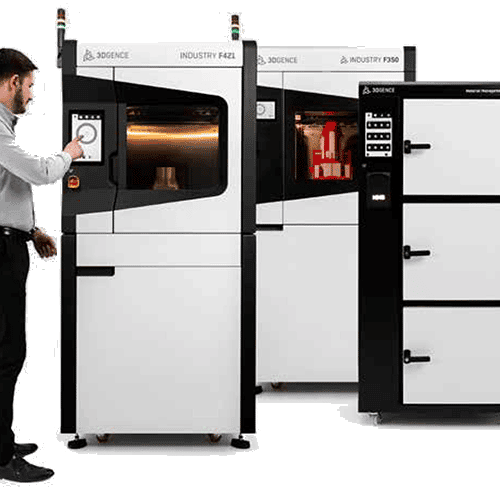When & who does industrial additive manufacturing pay off?
There is a serious boom in the branch of additive technologies. The possibility of faster production and independence from supply chains is especially appreciated by the automotive, aerospace, and medical industries.
3D printing – unlimited possibilities for the industry
Additive manufacturing, usually referred to as 3D printing, is a group of various technologies that uses such materials as polymers, metal alloys, or composites to create the desired parts in a way of joining consecutive layers of material. Depending on 3D printing technology there are various ways of creating the physical adhesion between the layers. The common factor of all additive manufacturing technologies is that the physical object is being built layer by layer, most AM technologies assure virtually no loss of material used, and the machines needed to complete the process are cheaper than conventional manufacturing equipment.
Applications of additive manufacturing in the industry:
In industrial conditions, there are multiple fields where additive manufacturing can be used – the production sites and the whole production process can be improved in many ways. Companies discovered new possibilities:
![]()
Rapid production of the prototypes. The process of prototyping can be substantially sped up comparing to previous prototyping methods. Rapid prototyping, which translates into significant savings in time and costs associated with product development and market launch.
![]()
Quick changes of jigs and fixtures used on-site which allows fast machine conversions and changeovers between jobs. New customized tooling can be designed and printed internally within hours or days. There is no need to order it from a third-party or choose from existing market solutions that do not always exactly suit the needs.
![]()
Production of hollow parts which are not possible to produce in
any other technology
![]()
The possibility of print-in-place of prototypes and fully functional end-use parts. This unique feature of additive manufacturing allows producing already assembled structures of cooperating moving parts.
![]()
Lower the stocks of spare parts, with print on demand internal service.
![]()
Replacing heavy metal parts with lightweight polymers or composites of properties sufficient for the application.
![]()
3D printing is often used in small batch production, especially when the use of traditional injection moulding methods proves uneconomical or significantly increases the price of the final product.
![]()
Parts produced using high-temperature printing technology have increased thermal and mechanical strength, and outsourcing unit production of such components is too costly, time-consuming and requires handling logistics processes. Rapid Manufacturing can quickly and cheaply make a small batch that is ready to be used or even sold. Therefore, 3D printers can produce off-the-shelf parts that are an essential component of the finished product.
Industrial printer features
The majority of engineering and highperformance materials require an enclosed printing chamber, preferably actively heated. To avoid printing failures the materials should be stored and handled properly, but most of all correct extrusion and print chamber temperature should be provided. 3DGence INDUSTRY line printers are fulfilling all the requirements that allow to reach or exceed nominal mechanical, thermal, and environmental properties that are promised by the filament manufacturer. The filament chamber and printing chamber are actively heated and the temperature is measured and controlled. The extrusion of various groups of materials is possible on one printer, but using dedicated interchangeable modules. Each module construction is adapted to specific requirements of materials groups, giving, as a result, the best possible print qualities.
The manufacturing process in additive technologies is simple. Typically, all we need to start manufacturing is a 3D model. As a result, we have no upfront costs and the total time to produce the part is short. An additional benefit is that manufacturing costs do not depend on the geometric complexity but on the dimensions of the part.
The industry also appreciates additive manufacturing for its low material waste compared to cavity technologies. 3D printing when designing a new product makes it much easier to make changes to subsequent prototypes, and possible mistakes are not as costly.
In which industries additive manufacturing is the most profitable
The machine production and tool line industries find great support in additive technologies due to the demand for small series, unusual geometries, or the need for after-sales service for years to come.
One more application of 3D printing in the industry is personalization. This is very important in a world where – especially in certain industries – there is an increasing shift away from mass production to individualized production. For example, the automotive industry, companies such as BMW is now taking advantage of the possibility of personalizing end products, allowing owners of mini-Coopers to customize the look of the car to their liking. 3DGence regularly cooperates with automotive companies, where personalization of production is particularly important. Product personalization is also applied in medicine. Thanks to computer tomography, the shape of the prosthesis is adapted to the specific patient. It is also possible to print out preoperative models.
